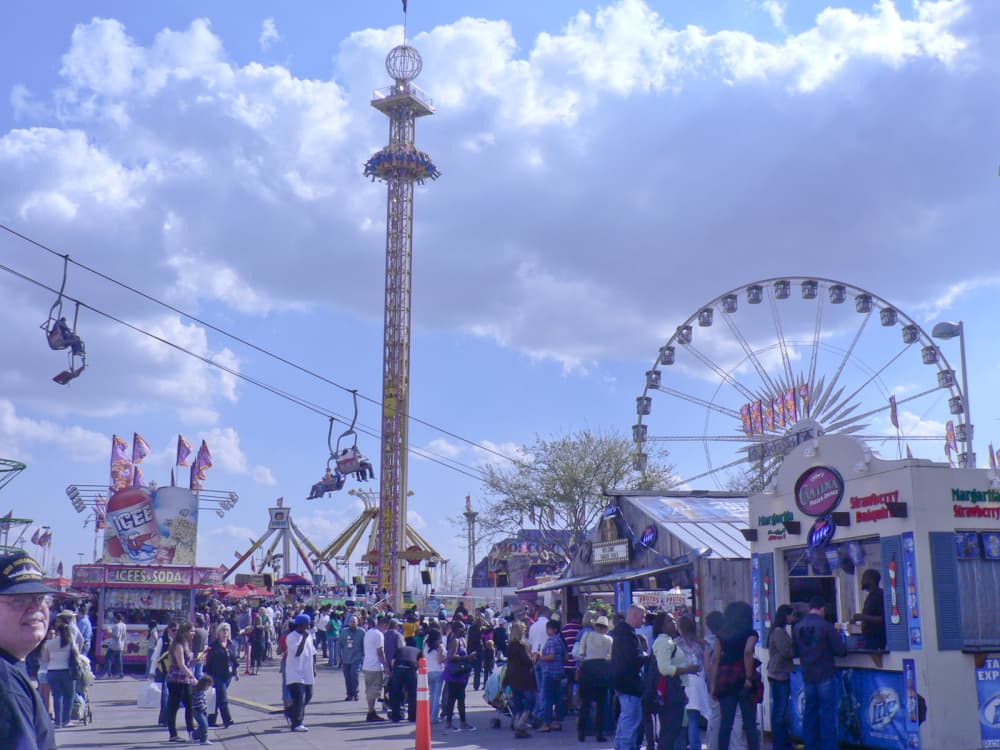Real Estate Round-up
From Sin Alley to the Energy Corridor: Six Houston places you won't find on amap
 The toughest thing about finding your way around Houston is locating stuffthat’s not on the map.
The toughest thing about finding your way around Houston is locating stuffthat’s not on the map. Some people have taken to calling it “Rice Village” but native Houstonians knowthe proper name is just “The Village.”
Some people have taken to calling it “Rice Village” but native Houstonians knowthe proper name is just “The Village.” Located on Loop 610, just south of the Astrodome this 100-acre theme park wasoriginally part of the vision of Judge Roy Hofheinz, the mastermind of theAstrodome and a driving force in creating the Astros baseball team.Courtesy photo
Located on Loop 610, just south of the Astrodome this 100-acre theme park wasoriginally part of the vision of Judge Roy Hofheinz, the mastermind of theAstrodome and a driving force in creating the Astros baseball team.Courtesy photo
If you are new to Houston, the toughest thing about finding your way around is locating stuff that’s not on the map.
Houstonians have names for places that the cartographers at Rand McNally have never heard of. (Right off-the-bat newcomers should know the Gulf Freeway is Interstate 45 south to Galveston. The Eastex Freeway is U.S. Highway 59 northeast toward Lufkin and the Southwest Freeway is U.S. 59 south to Rosenberg.)
But sometimes people have to relocate quickly. They have one weekend to find a new house in a new neighborhood. They may have heard of these important places that might make a difference in selecting a new home, but they can’t find it on their map.
So here are three big ones to begin the newcomers guide:
1. The Village
This is commercial district that sprouted up in the 1930s near the Texas Medical Center and Rice University. Some people have taken to calling it “Rice Village” but native Houstonians know the proper name is just “The Village.” It’s mostly retail and restaurants and bars, but there are some condos and apartments and other businesses.
The chains – such as Victoria’s Secret and The Gap – have a presence, but there are independents, too. The Village once was the location of what was Houston’s finest pool hall – Le Cue. Gone also is the Kentucky Fried Chicken outlet where I had my first real job. The Village boundaries, loosely speaking, are basically Kirby Drive, University Boulevard, Bissonnet and the Rice University campus.
This is a narrow swath of west Houston that is home to one of the world’s largest collections of energy companies. Some 75,000 people are employed in the Energy Corridor, which basically runs along Interstate 10 from the Sam Houston Tollway to the Grand Parkway. Shell, Exxon Mobil, ConocoPhillips, BP America, Citgo Petroleum, and many more, have offices there.
Many have assumed that the Energy Corridor moniker was created by David Wolff, a developer who had extensive holdings there, although Wolff denies it. The creation of the name is one of the most brilliant strokes in Houston real estate marketing. The Corridor breathes life into west side home building, including Cinco Ranch — the No. 1 community for new home sales.
3. Inside the Loop
This is generally regarded as all of the territory encircled by Loop 610 in the central part of Houston. It is highly desirable to many because it offers quick commutes to downtown, the Texas Medical Center and the arts and entertainment hubs.
Of course, it’s not so geographically precise. When people say they want to live “Inside the Loop,” they generally do not mean the eastern part of the territory along the Ship Channel. But, in general, real estate in the inner loop will be more expensive than properties in the far-flung suburbs.
In the Sixties, Baby
As they say: “If you want to know where we’re going look at where we’ve been.” Some interesting lessons can be learned by looking at three more spots that aren’t on the maps because they don’t exist anymore.
1. Magic Circle
In the early 1960s, the Westheimer area was recognized for its potential. Communities like Tanglewood were coming in and Westheimer was about to become a backbone of development. Of course, legendary developer Gerald Hines bought into the Magic Circle big-time. Hines developed the Galleria, which opened in 1970, and it all crystalized. Nobody uses the “Magic Circle” name anymore, but when new retailers are coming to Houston, this is where they look first.
2. Sin Alley
This was the cool place to live in the early 1960s. It’s actually a north-south street called “Mid Lane” that runs between San Felipe and Westheimer. In its heyday, Mid Lane was lined with apartments filled with singles wanting poolside parties, chicks in bikinis and plenty of booze – and perhaps, an occasional beatnik with a joint.
3. AstroWorld
Located on Loop 610, just south of the Astrodome, this 100-acre theme park was originally part of the vision of Judge Roy Hofheinz, the mastermind of the Astrodome and a driving force in creating the Astros baseball team.
AstroWorld was torn down in 2005 and the land has vacant, although there are reports that the Malick Group of Fort Worth and Lincoln Property Co. are planning to make something happen.
